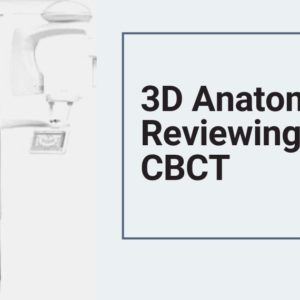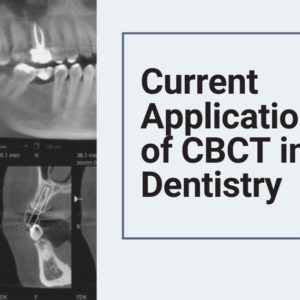Course Description
This course is designed as a basic cone beam CT course with 6.5 CE hours of on demand lectures to help familiarize each participant with cone beam CT and includes the fundamentals of cone beam computed tomography technology and radiation risks, features to consider when purchasing a cone beam CT unit, 3D anatomy with correlation of both 2D and 3D and includes how to review a CBCT as well as an optional advanced 3D anatomy lecture, applications of cone beam CT in multiple areas of dentistry including implantology, endodontics, surgery, orthodontics, periodontology, airway space, temporomandibular joints and pathology. In addition, radiographic interpretation of a 3D volume with a particular interest in benign vs. malignant diseases is discussed along with legal and ethical responsibilities of owning a cone beam CT.
Course Objectives: (Upon completion of the course the participant will understand the following)
- How a cone beam CT is acquired and reconstructed as well as differences between CBCT and medical CT
- What a clinician should consider when determining which CBCT will work best for their office
- What the radiation dosage is for a CBCT and how that is different from a 2D image. Radiation protection will be discussed
- Recognize and be able to describe the anatomy of the maxillofacial region as presented in CBCT images and correlate specific structures with their appearance in panoramic radiographs
- Understand how to approach and review a cone beam CT
- Better understand the use of CBCT for implant treatment planning
- Better understand the use of CBCT for evaluation of abnormalities and pathologies
- Better understand the use of CBCT for endodontic and periodontal applications
- Better understand the use of CBCT when evaluating the mandibular canal, third molars, temporomandibular joints and sinuses
- Better understand the use of CBCT for traumatic applications and orthodontic applications
- Better understand the uses of CBCT when using third party applications such as segmenting the airway space and for 3D printing
- Understand the ethical and legal responsibilities with owning a CBCT
- Understand the language of radiographic interpretation in dentistry
- Be able to categorize diseases using the decision tree
- Understand the differences between a benign vs malignant lesion




